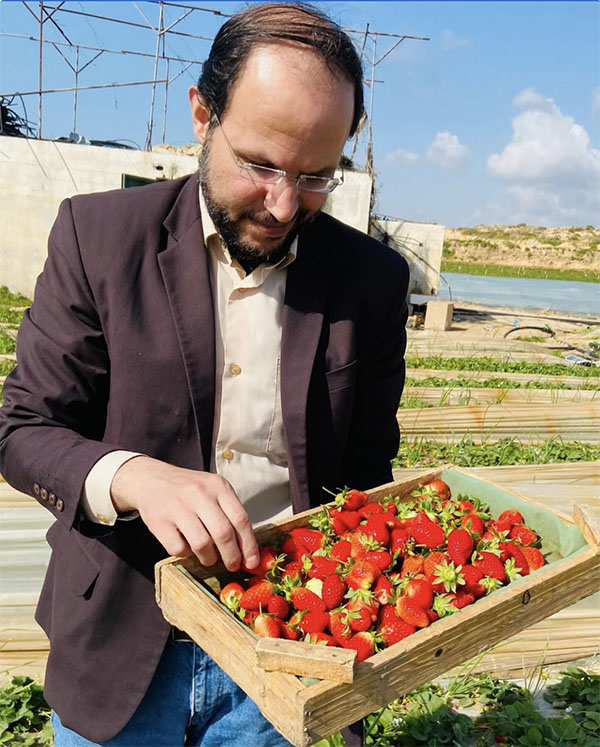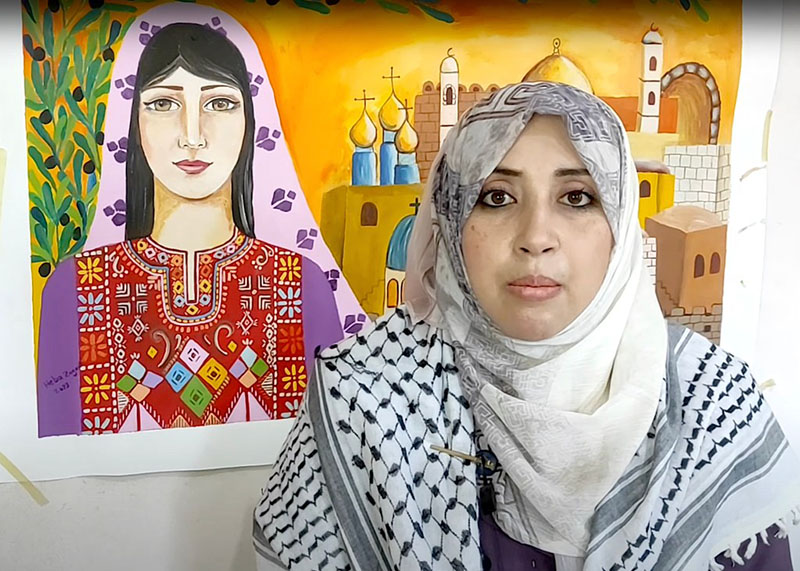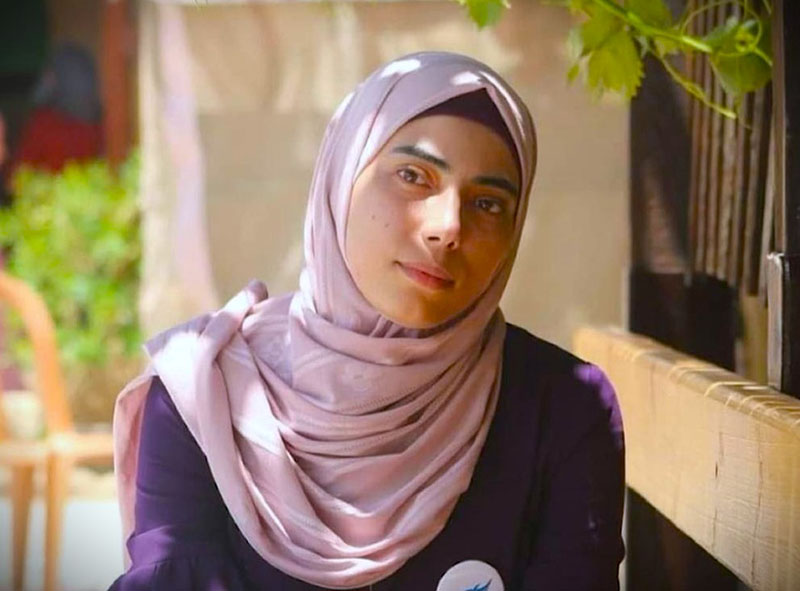
Three open wounds in Palestinian art
Art and culture in Palestine suffer amid the thousands of murders caused by Israel's bombings. A tribute to three Palestinian artists - a writer and professor, a painter, and a novelist and poet - who died in 2023 after being hit by Israeli bombs, the same ones that South Africa recently denounced before the International Court of Justice.
By Santiago Erazo
Culture journalist at RAYA Magazine
They call the concept in question sumud and it means something like “resistance” or, in more Western terms, “resilience.” In Palestinian culture it goes through its entire recent history, written in blood and fire, and has as its point of origin the Nakba of 1948. The sumud is what has allowed the Palestinians to replant their olive trees after having been burned. It is what fuels the impetus with which a family returns after exile. This is what can be glimpsed in the depths of the courage with which a father decides to stay in his land after having lost his children. It is a profound premise at the heart of which lies the Palestinian tradition of storytelling. The poet and literary critic Refaat Alareer says in the book Gaza Writes Back (Just World Books, 2014), an anthology of short stories written by fifteen young Gazan writers, that it is the stories, the transmission of them, that awaken desire to live off his countrymen.
Art in Palestine – its painting, its music, its literature – has dialogued with that tradition of telling stories founded by the sumud, and it has been the artists who have sought to tell the pain and the search for light, but also those who, during In recent months, in addition to thousands of other Palestinians, they have lost their lives in the midst of the war. Returning to his paintings, his novels or his poems is to encounter involuntary and premature goodbyes, with works inspired by suffering and anguish, but also by desire and illusion; with pieces that, in one way or another, prefigured the tragedy that those who created them would experience in the midst of uncertainty. Below are three brief tributes to three Palestinian artists who died in 2023: Refaat Alareer, Heba Zagout and Hiba Kamal Abu Nada.
Refaat Alareer (1979-2023)

The day Refaat Alareer died, December 7, a friend of his, the Palestinian poet Mosab Abu Toha, posted the news on his Instagram accompanied by a photograph of Refaat holding a wooden box filled with strawberries. “We both loved picking strawberries together. I took the photo last summer. This is really brutal,” the message of the post ended. Mosab Abu Toha's farewell was one of the first to make the rounds on the internet. The other condolences poured in, recognizing Alareer as one of the most important writers in Palestine and a mentor to the country's young writers.
Refaat used to pick strawberries in the fields of Gaza, but he also harvested stories throughout the strip: those of young Gazans who had the desire to recount helplessness and who recorded through words how Palestinian geography has taken shape. of a scar in the Middle East. The product of the harvest was recorded in two books: the aforementioned Gaza Writes Back and Gaza Unsilenced (Just World Books, 2015), a compilation of reflections on the conflict made by Palestinian writers after the attack by the Israeli Army in 2014. In turn, Once, Refaat Alareer, who worked as a professor at the Islamic University of Gaza, led We Are Not Numbers for many years, a project that provided writing workshops for young Gazans. His task was to democratize literature and writing in Gaza, far from the ivory towers of academia.
On November 30 of this year, Nora Barrows-Friedman, editor of The Electronic Intifada, greeted Refaat Alareer in what ended up being his last interview, eight days before his death. Ella Barrows-Friedman told him that she was happy to see him “smiling and handsome” behind the camera again. At that time Refaat claimed to be fine, “fighting like everyone else in Gaza.” He emphasized the lack of basic supplies and the similarity between what was happening there and what happened during World War II: “The destruction that we saw in sepia photos is happening before our eyes.” During the months that he experienced the intensification of the war, he suffered the dilemma of many Gazan families: stay together and risk dying or survive separately. In the end he lived the horror of both tragedies. On November 1, just over a month before being assassinated by the Israeli Army, he published a poem on his X profile that can be read as a testament and goodbye encrypted in verse:
"If I must die,
you must live
to tell my story,
to sell my things,
buy a piece of fabric
and some ropes,
(make it white with a long tail)
so that a child, somewhere in Gaza,
while you look into the sky's eyes
waiting for his father who went up in flames
and don't say goodbye to anyone,
not even of his flesh,
not even of himself (...)”.
Heba Zagout (1984-2023)
Heba Zagout's Palestine, the one portrayed in her paintings, is iridescent and bristling with mosques and doves. Women dressed in tatreez (a type of Palestinian embroidery) and cacti, oranges and horses are also frequently seen. From time to time fireworks explode, looking like dahlias opening in the sky. When she painted Jerusalem, she did so by covering its floor with red anemones, those flowers that the Greeks associated with the blowing of the wind in spring. The newspaper Al-Hadath described her style thus: “In her paintings there are three elements that form a basis on which to build her themes. The first is her homeland, Palestine. The second is the woman in a broad sense or through her role as her mother. The third is nature, with its various components, which are sometimes combined in a single work that presents these three elements.”
Heba studied graphic design at the Gaza Training School in 2003 and then graduated from the Faculty of Fine Arts at Al-Aqsa University in Gaza. She worked as an art teacher at the Ministry of Education and was dedicated to her two children and to capturing both the Palestine that she longed for and the Gazan unrest. One of her most gloomy paintings is a portrait of a sad woman with a caged bird on her head. In another one, a young woman is seen sitting with her eyes closed, while her back is turned to a window that shows a city on fire, with the sky shot with blood, and next to her two pigeons fluttering around the room.
A few weeks before she died, Heba shared a post of another painting in which she illustrated a melancholic woman holding a dove. In the caption she said: “We constantly search for security in our lives. We can find it in love, but the search will persist.” On October 13, she died along with her two children after an Israeli air attack. In a posthumous letter, the Algerian journalist Wiame Awres, who is also a painter, said goodbye to her, saying: “You should know that many of us saw your paintings and loved them. We loved you. After your death it was learned that the paintings were burned during the bombing. But we have seen and documented them from your page. You, dear Palestinian woman, were kidnapped by a bombing whose origin is also known (...). How I hoped your attempts to survive would succeed. But you left us, you were torn away from all of us.”
Hiba Kamal Abu Nada (1991-2023)

Hiba did not like the noise of conversations, says journalist Najla Najm in a note for the Arabic portal Banfsj. If they weren't real, rich discussions, she stayed away from protocols and chitchat. His relationship to her words made her writing, in Najm's words, “affectionate.” According to the journalist: “when you start reading her texts you feel like something hugs you; “She writes like a reader looking for a mirror to reflect her hidden secret.”
Hiba was part of that lineage of artists who enjoy great sensitivity and at the same time great intelligence, both distributed in respective proportions. In one year he could receive second place in the Sharjah Prize for Arab Creativity for his novel Oxygen is Not for the Dead, among 70 candidates throughout the Arab world, and in the next he could obtain his master's degree in nutrition, a time after graduating in biochemistry from the Islamic University of Gaza. She was a prolific woman, who at 32 years old had achieved what others take twice as long to achieve.
She was also a poet. The poem she wrote a few days before she died after an Israeli bombing went viral on the Internet; that poem in which she said: “The night in the city is dark, except for the glow of the missiles; silent, except for the sound of the bombing; terrifying, except for the reassuring promise of prayer; black, except for the light of the martyrs.” In the handful of his poems that can be found online, it is possible to identify the burden of unredeemed loneliness in the midst of war; the darkness of helplessness; the silence of the abandonment of the world. “These are dark times in which no one defends us,” says one of her verses. “How lonely I was / our loneliness / when they won their wars,” says another. In the midst of orphanhood, writing appeared as something similar to a consolation. The characters in Oxygen is Not for the Dead “grew for three years while she grew up with them,” says Najla Najm. They cried and she “wiped away the pain that fell on her cheeks, and she continued, letter by letter, comma by comma, to reveal her story,” set in the context of the Arab revolutions
20th century and the search for freedom that went through them.
The months passed and the worsening of the conflict undermined the peace. A day before he died, he wrote on his Facebook: “My circle of friends is decreasing; They become little coffins scattered everywhere.” On October 20, the Israeli Army launched a missile that landed in his neighborhood. The satellite photo taken after the bombing reveals the signs of horror: a cluster of grayish ruins that cover what was previously supported by life.
Shortly after his death, one of his former teachers, Yasser Shahin, lamented that Hiba's death also meant the end of his dreams, such as making a film based on one of his stories. There are also unfinished novels and poems, and the certainty that without Hiba, without Heba and without Refaat, the world – the harsh beauty that underlies it and supports it – is a little more orphaned.

































































